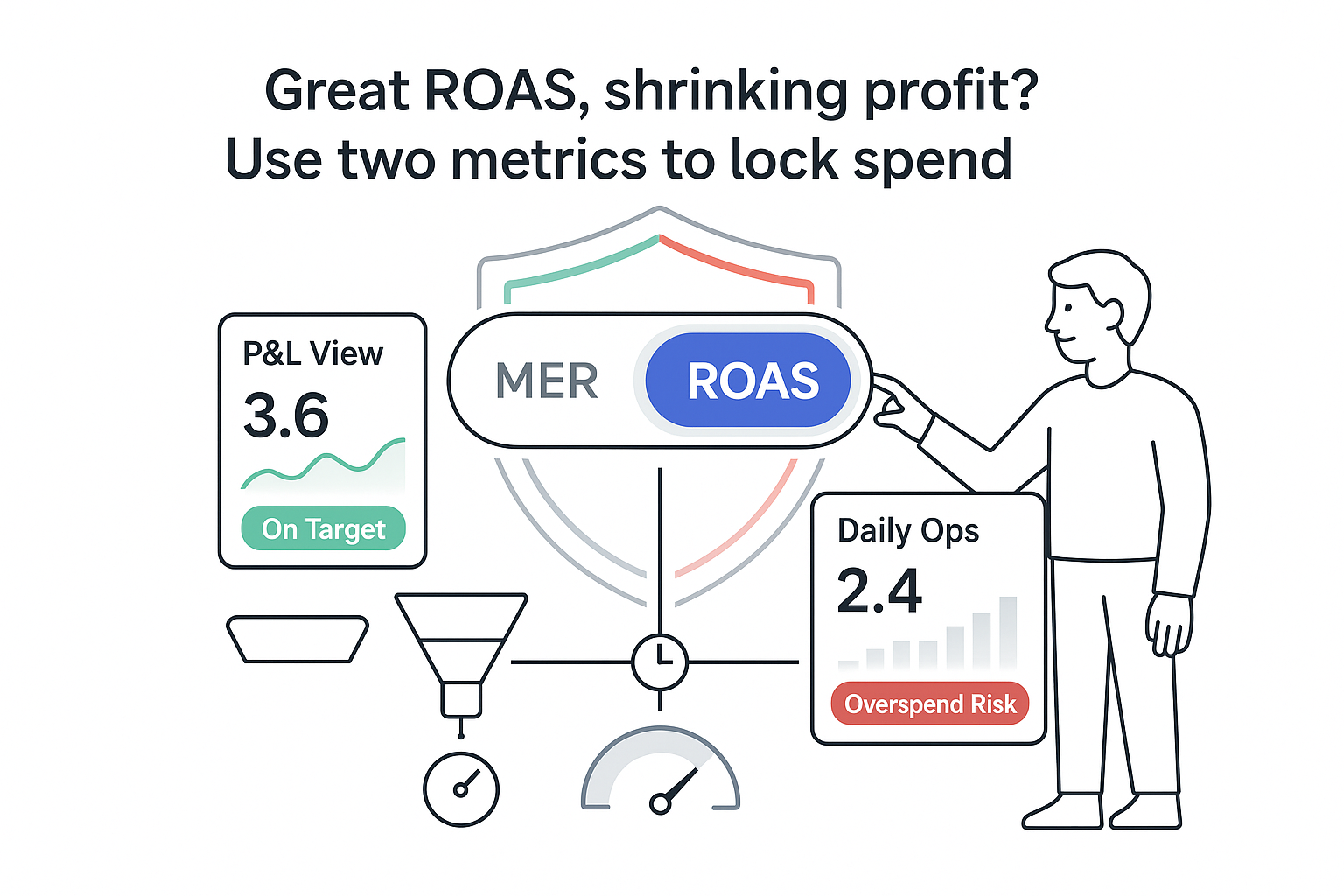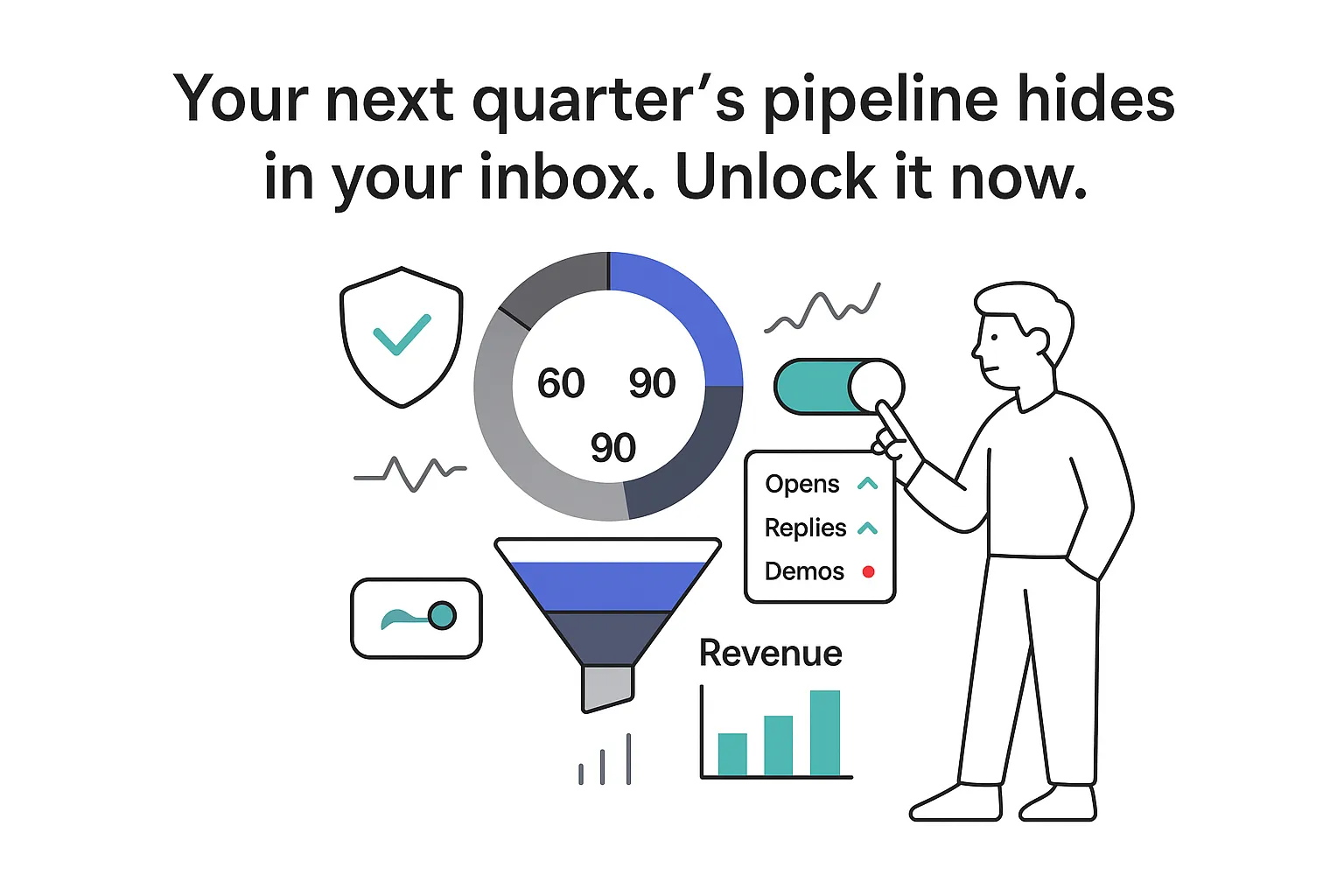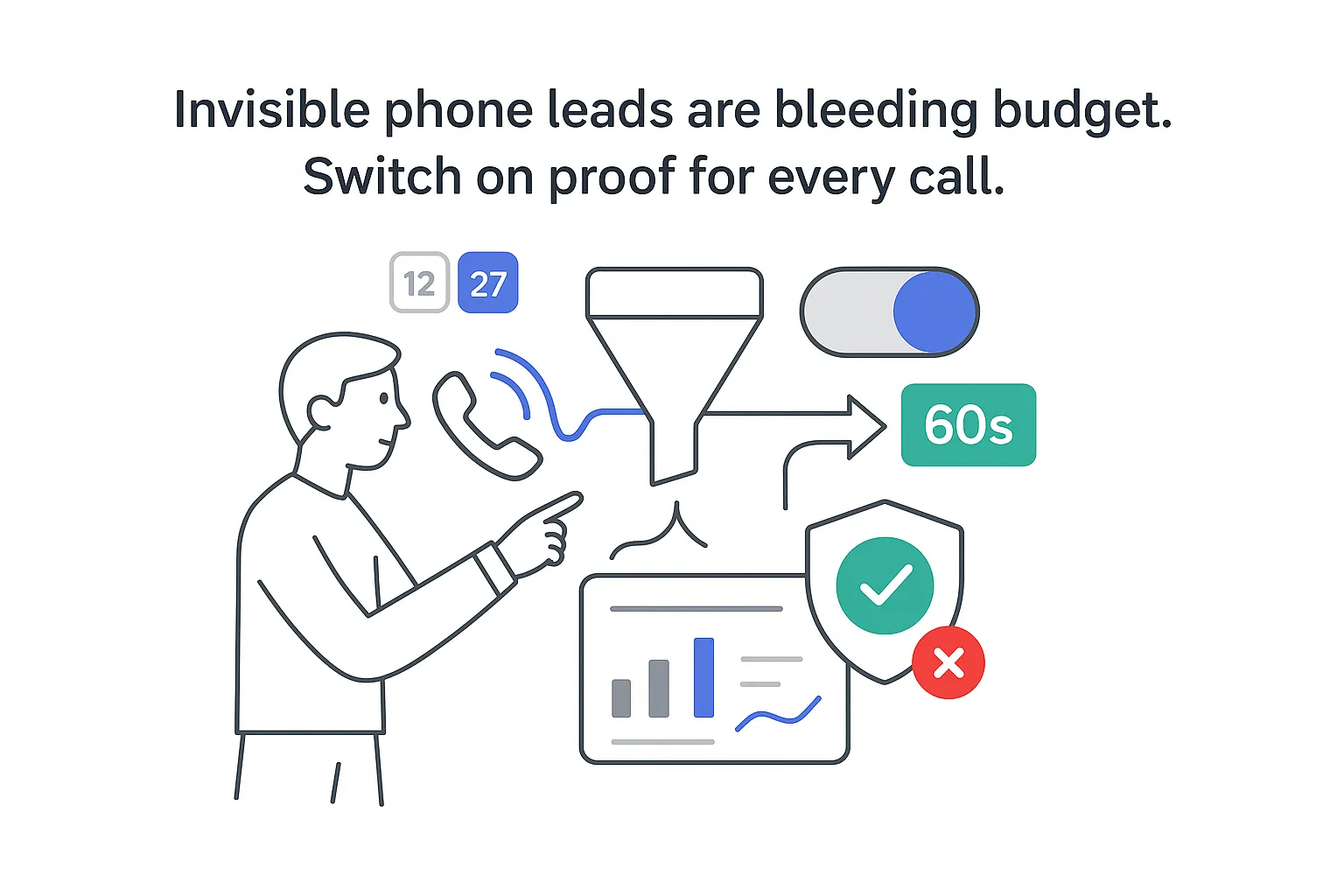If you run a B2B service company or a SaaS-like retainer model, you already watch cash like a hawk. The CAC payback period gives me a clean answer to a simple question: how fast do I earn back what it cost to win a new customer. It sounds basic. It is. Yet it quietly controls how fast you can scale, how much you can invest in growth next quarter, and how much runway you really have when ad costs tick up or sales cycles stretch. I want this metric to be practical, fast to calculate, and useful for decisions I need to make this month.
How I calculate the CAC payback period
Here’s a quick way I calculate CAC payback without getting lost in the weeds. You can do it in minutes in a simple spreadsheet.
Inputs I use
- CAC: Fully loaded Customer Acquisition Cost (CAC) per new customer. Include paid media, content, SDRs, AEs, enablement, and a sensible share of overhead tied to acquisition. Divide total sales and marketing spend by the number of new customers in the period. For a deeper breakdown of what CAC represents, see this primer on how CAC represents the total expense.
- ARPA or ARPU: Average revenue per account or per user, per month. If you bill quarterly or annually, spread it monthly for this math.
- Gross margin: Percentage of revenue left after direct delivery costs. For software, think hosting and support. For agencies or B2B services, think direct labor, contractors, and software needed to serve that client. If you need a refresher, here is how to calculate and interpret gross margin and why it matters in SaaS.
- Churn or retention: Monthly customer churn or retention. If you track net revenue retention and expansion, note those too. More on tracking and interpreting churn rate.
- Expansion revenue: Upsells and cross-sells that increase account revenue over time. In recurring models this shows up as Expansion Revenue (MRR).
- Collections timing: Whether you collect cash upfront or after delivery. This matters for a cash payback view.
Two quick approaches I keep side by side
- Cash payback: CAC divided by monthly cash collected from the new customer. If you get annual prepay, cash payback can be instant.
- Gross margin payback: CAC divided by monthly gross profit from that customer. This is the standard for unit economics.
Simple procedure
- Calculate CAC per new customer.
- Find monthly gross profit per customer: ARPA × gross margin.
- If you want a cohort view, apply monthly retention and expansion to that cohort’s ARPA, then multiply by gross margin to get expected gross profit over time.
- Decide whether to use a quick single-month snapshot or a cohort view across months. The cohort view is more reliable.
- Payback in months equals CAC divided by monthly gross profit (or by expected monthly gross profit if you model churn and expansion).
CAC payback period: definition and why it matters
The CAC payback period measures how many months it takes to recover your cost to acquire a customer - it is often framed as the Months to Recover CAC. It answers when each new deal stops being a cost center and starts paying you back.
Why it matters: it sets a ceiling on how fast you can grow without starving the bank account, reveals channel efficiency and whether pricing and packaging carry their weight, and helps plan headcount and media spend without crossing a line you regret next quarter. In short, CAC payback ties today’s sales and marketing spend to runway and the speed I can scale.
B2B services nuance: retainers map cleanly to this metric, while projects often need a version that accounts for milestone billing and variable delivery costs. If I invoice net 30 but collect in 45 days on average, the cash version of CAC payback will look worse than the gross margin version. Both views are valid, and I use both in planning.
CAC payback formula: simple vs adjusted
Simple formula: CAC payback period (months) = CAC / Monthly gross profit per customer. Monthly gross profit per customer = ARPA × Gross margin. Example: CAC = 1,200; ARPA = 200; Gross margin = 80%. Monthly gross profit = 160. Payback = 1,200 / 160 = 7.5 months.
Adjusted formula (when I want more accuracy): CAC payback period = CAC / Adjusted monthly gross profit. Adjustments can include gross margin by product or plan, ramp time to full usage, average discount level, early churn with a retention curve, expansion revenue over time, and collections timing if I need a cash view. For broader context on how this fits with other SaaS metrics, see these core financial metrics.
Cohort vs average: the cohort method tracks a month’s new customers as a group and watches their gross profit over time to find the month cumulative gross profit exceeds CAC - most accurate. The average method uses overall averages for ARPA, margin, and churn - faster, but it can hide channel-specific issues.
New vs blended payback: new-logo payback includes only revenue from the new customer cohort. Blended payback includes expansion from that cohort too and is useful if expansion is reliable and starts early.
CAC payback examples
SaaS-style example
Assumptions: CAC 1,200 per new customer; Monthly ARPA 200; Gross margin 80%; Monthly churn in the first 6 months 2%; Expansion 1% lift in revenue per month starting month 4.
Step 1 - base monthly gross profit: 200 × 0.8 = 160 in month 1.
Step 2 - adjust for churn and expansion with a simple cohort view: Month 1: 160. Month 2: 160 × 0.98 = 156.8. Month 3: 156.8 × 0.98 = 153.7. From month 4 onward, apply both churn and expansion each month by multiplying by 0.98 × 1.01 = 0.9898. Month 4: 153.7 × 0.9898 ≈ 152.1. Month 5: 152.1 × 0.9898 ≈ 150.6. Month 6: 150.6 × 0.9898 ≈ 149.0. Cumulative after 6 months ≈ 922.
Step 3 - when does cumulative pass CAC: continue the 0.9898 factor. Around month 8, cumulative gross profit exceeds 1,200. That puts CAC payback at roughly 7.9 to 8 months. The quick average formula gave 7.5 months; the cohort view lands in the same zone while capturing early churn and expansion timing.
Sensitivity: if ARPA drops 10% to 180, monthly gross profit becomes 144 and simple payback rises to 8.3 months. Small changes matter. If early churn bumps to 4%, payback can drift by 1 to 2 months. Improving gross margin or trimming discounts by a few points often improves payback by weeks without touching ad spend.
B2B services retainer variant
Assumptions: CAC 3,000 per client; Monthly retainer 6,000; Delivery costs month 1 at 70% due to onboarding; Delivery costs after month 1 at 55% ongoing; Collections 50% upfront in month 1 and 50% on day 30; Average retention on retainers 18 months.
Gross margin math: Month 1 gross margin is 30% × 6,000 = 1,800. Month 2 onward gross margin is 45% × 6,000 = 2,700 per month. Cumulative gross profit crosses CAC just after month 2 (1,800 + 2,700 = 4,500). On a cash basis, if half is collected upfront and CAC outlays occur later in the month, cash payback can be within the first month - exact timing depends on cash flow schedules.
CAC payback benchmarks
Benchmarks are helpful, but I use them as guardrails and compare against my model, ACV, and channel mix. For SaaS-style models, under 12 months is excellent, 12-18 months is good, 18-24 months can be acceptable with strong retention and expansion, and over 24 months is risky. Enterprise motions often accept longer payback windows due to larger ACVs and longer cycles, while low-touch or product-led motions should be faster. If gross margin is high and churn is low, I can carry a longer payback than a peer with thin margins.
For B2B services models, a healthy target is 9-15 months on average. Predictable retainers with strong referrals can push toward the low end. Project-heavy businesses should measure payback by project type and consider a cash view because milestone billing changes the shape.
Key factors that shift the CAC payback period include ACV and discounting policy, channel mix and media costs, sales cycle and win rates, gross margin by service line, onboarding efficiency and early churn, and net revenue retention. Comparisons only make sense when framed by these inputs.
LTV to CAC, NRR, and payback
The LTV to CAC ratio sits next to CAC payback. Payback shows how fast you recover spend. LTV to CAC shows long-term value against the cost to win a deal. Practical thresholds: aim for 3:1 or better at steady state, be cautious below 2:1, and if I push growth during a season and see LTV:CAC dip temporarily, I watch CAC payback to make sure I’m not stretching cash. For more context, see the LTV/CAC Ratio.
Connections and pitfalls: better retention increases LTV and often shortens payback because early months stabilize and expansion kicks in. Higher gross margin lifts both payback and LTV. A common pitfall is heavy discounts, poor onboarding, or hidden delivery costs making payback look fine on paper while LTV:CAC lags. I track both. If NRR is above 110%, expansion can shave months off payback. If NRR is below 100%, I feel every point of churn in both metrics.
How I improve CAC payback period
There’s no single magic move. I improve CAC payback by stacking practical levers that show up in weeks, not just next year’s plan. Raise ARPA through cleaner packaging and pricing by tightening tiers and moving rarely used features to add-ons. Test a 5-10% price lift on new deals with value-based messaging. For services, turn open-ended scopes into fixed deliverables with outcome language.
Improve onboarding to cut early churn. Run a 30-60 day onboarding plan that shows time-to-value inside the first week. In SaaS, instrument activation with product analytics. In services, set weekly milestones in your project management tool and share status in the first meeting. A small drop in early churn can compress payback by a full month.
Shift channel mix toward lower CAC. Reallocate toward channels with above-average conversion and lower effective CAC. Use an attribution approach sales and marketing both trust - clean CRM data plus consistent tracking parameters is enough.
Shorten the sales cycle with tighter qualification. Narrow your ICP and remove edge cases from outbound and paid targets. Give reps a clear go or no-go checklist at discovery to keep pipeline quality and CAC in check. Lift gross margin by trimming delivery costs - standardize recurring work, templatize repeatable steps, and negotiate vendor contracts.
Encourage annual prepay or upfront retainers when appropriate. Offer a small incentive for annual billing or upfront retainers. This often moves cash payback close to zero months while gross-margin payback still reflects delivery economics.
Quick wins that show up in 30-90 days
- Remove one discount tier
- Update pricing pages or proposals to emphasize value over features or hours
- Add one activation milestone to onboarding and track it
- Reallocate 20% of ad spend to a historically lower-CAC channel
- Document a lighter version of a high-cost delivery workflow for new clients
I track changes weekly for a month, then monthly for two quarters, using a simple dashboard or spreadsheet.
Build a quick model you can trust
Required fields: CAC per new customer, monthly ARPA or ARPU, gross margin percentage, monthly churn rate, monthly expansion rate, and a collections timing flag for a cash view. Outputs: CAC payback period in months on a gross margin basis and on a cash basis, sensitivity for ±10% changes in ARPA and churn, and a cohort view showing cumulative gross profit by month against CAC.
How I structure it: an Inputs tab for CAC, ARPA, margin, churn, expansion, and collections timing. A Cohort tab that starts each cohort at month 1, applies churn and expansion, multiplies by margin, and sums cumulative gross profit to flag the month it crosses CAC. A small sensitivity grid that bumps ARPA and churn up and down by 10% so I can see how payback shifts.
Data quality tips: keep separate CAC estimates by channel so I can compare payback across paid search, outbound, partner-sourced, and organic. Pull ARPA and churn from a consistent system of record and reconcile definitions quarterly. For services, split CAC and margin by offer type since delivery costs vary across project vs retainer work.
A last word on using CAC payback in planning
It’s tempting to chase a single number. I keep it practical instead. CAC payback shines when I measure it by cohort and by channel, check it against LTV:CAC, and use both cash and gross-margin views in the budget. That gives me the confidence to pull spend forward in a strong quarter or slow the pace when ad costs spike. Simple, clear, repeatable. That’s what real growth looks like.







.svg)